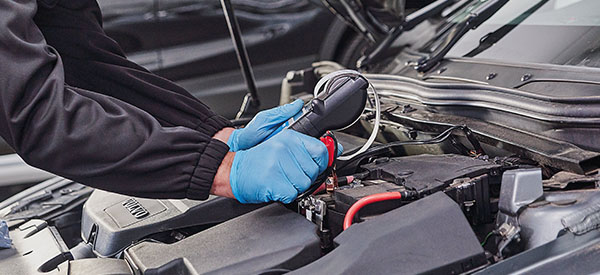중국의 오래 지속되는 전력: 100Ah 리튬 배터리 LiFePO4의 수명 탐색
소개:
In recent years, lithium batteries have gained immense popularity due to their high energy density, lightweight nature, and long lifespan. Amongst various types of lithium batteries, the lithium iron phosphate (LiFePO4) battery stands out as one of the most reliable and durable options available. This article aims to delve into the lifespan of a 100Ah LiFePO4 battery and highlight its advantages over other battery chemistries.
Understanding LiFePO4 Battery Chemistry:
LiFePO4 batteries, also known as LFP batteries, utilize lithium iron phosphate as the cathode material. This unique chemistry offers several advantages compared to other lithium-ion batteries. Firstly, LiFePO4 batteries have a higher thermal and chemical stability, making them less prone to thermal runaway or explosion. Secondly, they exhibit a longer cycle life, ensuring extended usability. Lastly, LiFePO4 batteries are more environmentally friendly as they contain no hazardous materials like cobalt or nickel, minimizing the risk of pollution.
The Lifespan of a 100Ah LiFePO4 Battery:
The lifespan of a battery is typically determined by the number of charge-discharge cycles it can undergo before its capacity significantly degrades. A 100Ah LiFePO4 battery can endure approximately 2000 to 5000 cycles, depending on various factors such as depth of discharge (DoD), operating temperature, and charging rate.
Depth of Discharge (DoD):
DoD refers to the percentage of a battery\’s capacity that is utilized during each charge-discharge cycle. Generally, a lower DoD results in an extended battery lifespan. For a 100Ah LiFePO4 battery, maintaining a DoD of around 20-30% can ensure a longer operational life.
Operating Temperature:
The operating temperature plays a crucial role in determining the lifespan of a LiFePO4 battery. High temperatures accelerate the degradation process, shortening the battery\’s overall lifespan. It is recommended to keep the battery within a temperature range of -20°C to 60°C for optimal performance and longevity.
Charging Rate:
Another factor impacting the lifespan of a LiFePO4 battery is the charging rate. Rapid charging or discharging the battery can increase the stress on its materials, leading to a shorter lifespan. It is advisable to charge the battery at a moderate rate to maintain its longevity.

Advantages of LiFePO4 Batteries:
LiFePO4 batteries offer several advantages over other lithium-ion batteries, making them an ideal choice for various applications. Firstly, they have a higher energy density, allowing for more energy to be stored in a smaller and lighter package. This makes them ideal for portable devices, electric vehicles, and renewable energy storage systems. Secondly, LiFePO4 batteries have a low self-discharge rate, retaining their charge for longer periods. This characteristic makes them suitable for standby and backup power systems. Lastly, LiFePO4 batteries are highly efficient, providing a consistent output voltage throughout their discharge cycle.
결론:
In conclusion, a 100Ah LiFePO4 battery is a reliable and long-lasting power source, offering numerous advantages over other battery chemistries. With a lifespan of approximately 2000 to 5000 cycles, a LiFePO4 battery can provide consistent and efficient power for various applications. By carefully considering factors such as DoD, operating temperature, and charging rate, users can maximize the lifespan of their LiFePO4 battery. With their high energy density, lightweight nature, and environmental friendliness, LiFePO4 batteries are undoubtedly a promising solution for the future energy needs of society.
-
 In recent years, there have been significant advancements in medical equipment powered by lithium batteries. These advancements have revolutionized the healthcare industry, enabling medical practitioners to provide better patient care and improve overall treatment outcomes. From portable devices to implantable technologies, lithium batteries have become the power source of choice due to their efficiency, reliability, and long-lasting performance. One...더 읽어보세요
In recent years, there have been significant advancements in medical equipment powered by lithium batteries. These advancements have revolutionized the healthcare industry, enabling medical practitioners to provide better patient care and improve overall treatment outcomes. From portable devices to implantable technologies, lithium batteries have become the power source of choice due to their efficiency, reliability, and long-lasting performance. One...더 읽어보세요 -
 As a car owner, you know how important it is to have a reliable car starter battery. Without it, your vehicle won start, leaving you stranded and unable to get where you need to go. A car starter battery is what provides the electrical power necessary to start the engine, and without it, you out of luck. There are...더 읽어보세요
As a car owner, you know how important it is to have a reliable car starter battery. Without it, your vehicle won start, leaving you stranded and unable to get where you need to go. A car starter battery is what provides the electrical power necessary to start the engine, and without it, you out of luck. There are...더 읽어보세요 -
 소개 세계가 더욱 지속 가능한 미래로 나아가면서 전기 자동차(EV)에 대한 수요는 계속해서 증가하고 있습니다. 그러나 EV 제조업체가 직면한 주요 과제 중 하나는 효율적이고 오래 지속되는 배터리를 개발하는 것입니다. 최근 몇 년 동안 리튬 이온 배터리 분야에서 상당한 연구 개발이 이루어졌으며 새로운 돌파구가 나타났습니다....더 읽어보세요
소개 세계가 더욱 지속 가능한 미래로 나아가면서 전기 자동차(EV)에 대한 수요는 계속해서 증가하고 있습니다. 그러나 EV 제조업체가 직면한 주요 과제 중 하나는 효율적이고 오래 지속되는 배터리를 개발하는 것입니다. 최근 몇 년 동안 리튬 이온 배터리 분야에서 상당한 연구 개발이 이루어졌으며 새로운 돌파구가 나타났습니다....더 읽어보세요 -
 With the increasing demand for renewable energy, energy storage has become more important than ever before. The development of lithium-ion batteries has revolutionized the energy storage industry, making it possible to store large amounts of energy efficiently and cost-effectively. Among the different types of lithium-ion batteries, the Lithium Lifepo4 battery has become increasingly popular because of its unique properties. ...더 읽어보세요
With the increasing demand for renewable energy, energy storage has become more important than ever before. The development of lithium-ion batteries has revolutionized the energy storage industry, making it possible to store large amounts of energy efficiently and cost-effectively. Among the different types of lithium-ion batteries, the Lithium Lifepo4 battery has become increasingly popular because of its unique properties. ...더 읽어보세요 -
 With the increasing demand for sustainable and renewable energy, there has been a rise in the use of lithium-ion batteries. Lithium iron phosphate (LiFePO4) batteries are a type of lithium-ion battery that has gained popularity due to their high energy density, long cycle life, and low toxicity. The 12V 100Ah LiFePO4 lithium battery is a powerful option for those...더 읽어보세요
With the increasing demand for sustainable and renewable energy, there has been a rise in the use of lithium-ion batteries. Lithium iron phosphate (LiFePO4) batteries are a type of lithium-ion battery that has gained popularity due to their high energy density, long cycle life, and low toxicity. The 12V 100Ah LiFePO4 lithium battery is a powerful option for those...더 읽어보세요 -
 Lithium batteries have become increasingly popular over the years due to their high energy density and long cycle life. They are now commonly used in various applications such as electric vehicles, portable electronics, and renewable energy systems. In some cases, it may be necessary to connect multiple lithium batteries in series to achieve the desired voltage level. However, there are...더 읽어보세요
Lithium batteries have become increasingly popular over the years due to their high energy density and long cycle life. They are now commonly used in various applications such as electric vehicles, portable electronics, and renewable energy systems. In some cases, it may be necessary to connect multiple lithium batteries in series to achieve the desired voltage level. However, there are...더 읽어보세요 -
 소개: 세계가 기존 에너지원에 대한 보다 깨끗하고 지속 가능한 대안을 모색함에 따라 태양열 및 풍력과 같은 재생 가능 에너지원은 최근 몇 년 동안 큰 관심을 얻었습니다. 그러나 이러한 에너지원의 간헐적인 특성과 효율적인 에너지 저장 시스템의 부족으로 인해 광범위한 채택이 방해를 받았습니다. 이 과제에 대한 유망한 솔루션 중 하나는 다음과 같습니다.더 읽어보세요
소개: 세계가 기존 에너지원에 대한 보다 깨끗하고 지속 가능한 대안을 모색함에 따라 태양열 및 풍력과 같은 재생 가능 에너지원은 최근 몇 년 동안 큰 관심을 얻었습니다. 그러나 이러한 에너지원의 간헐적인 특성과 효율적인 에너지 저장 시스템의 부족으로 인해 광범위한 채택이 방해를 받았습니다. 이 과제에 대한 유망한 솔루션 중 하나는 다음과 같습니다.더 읽어보세요

